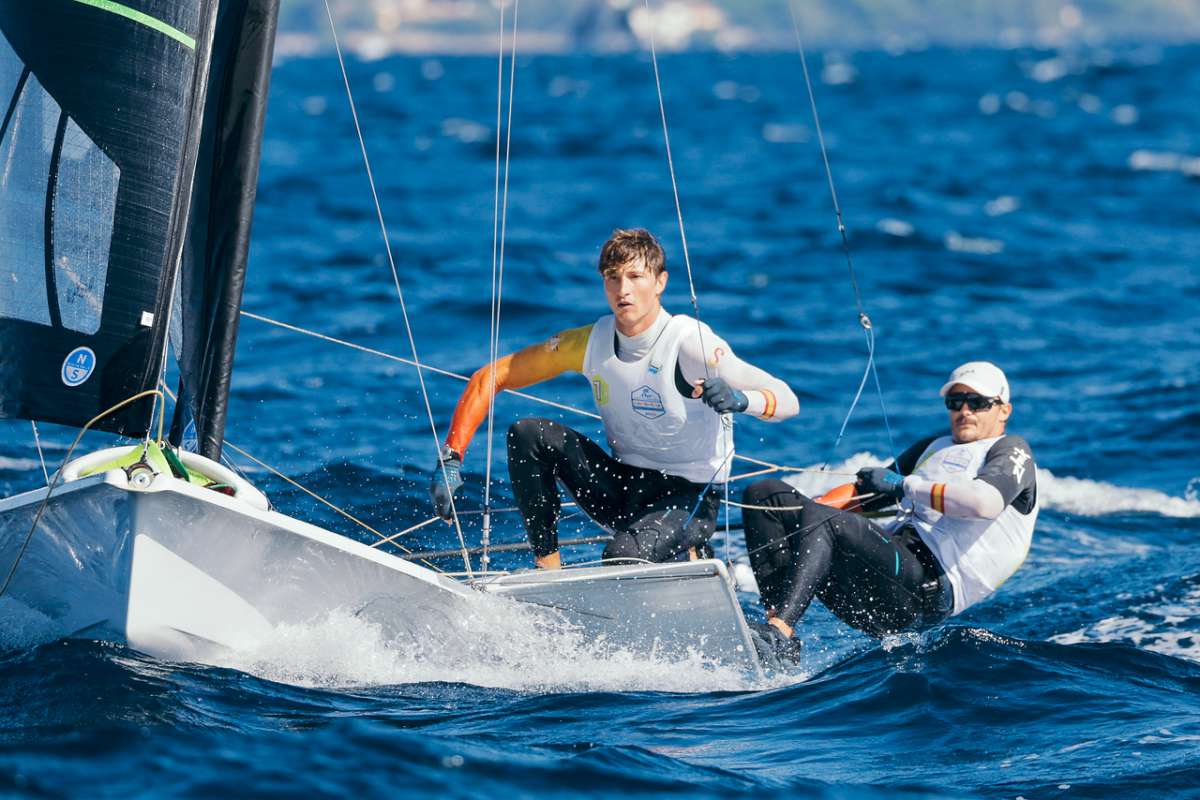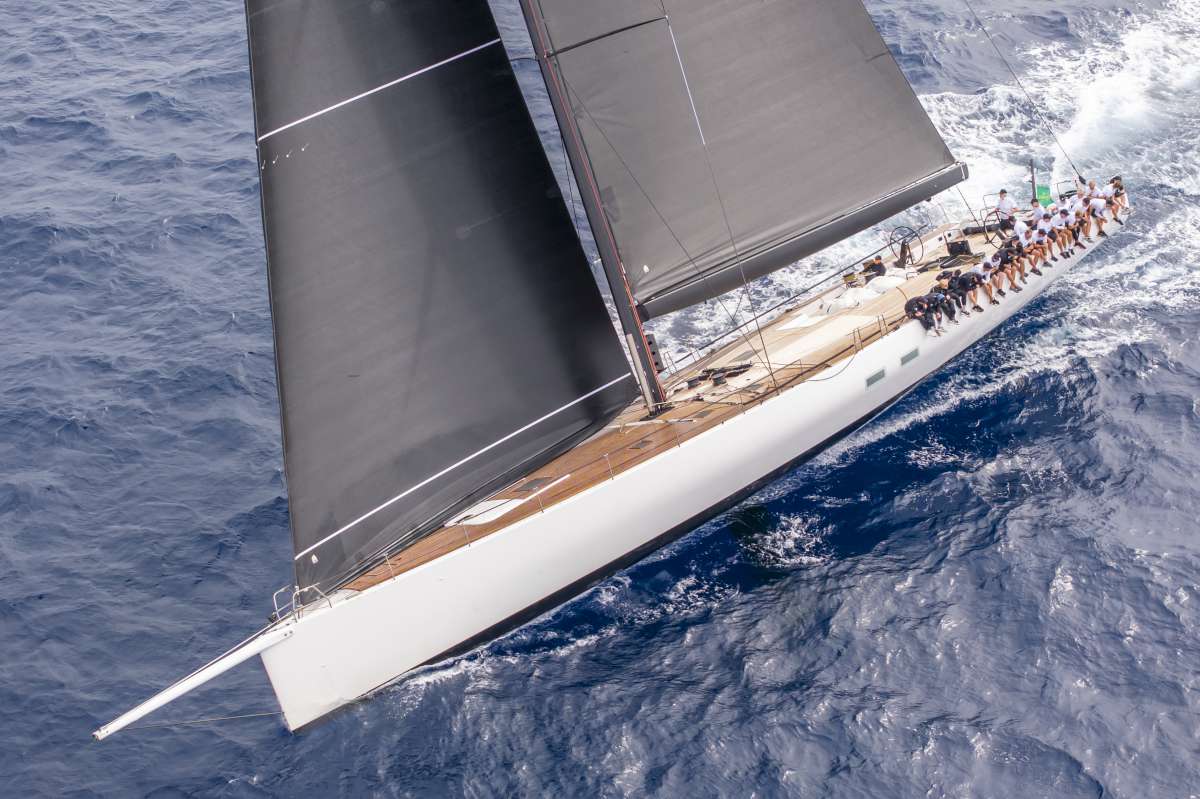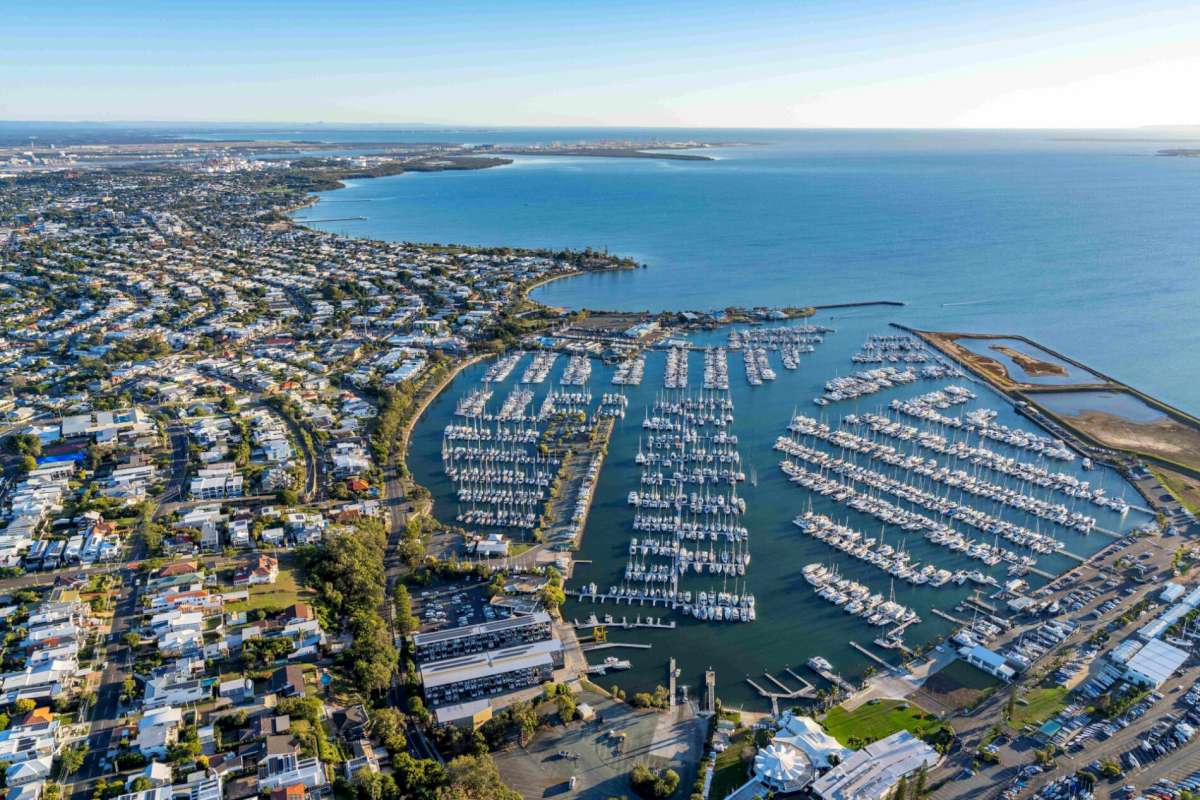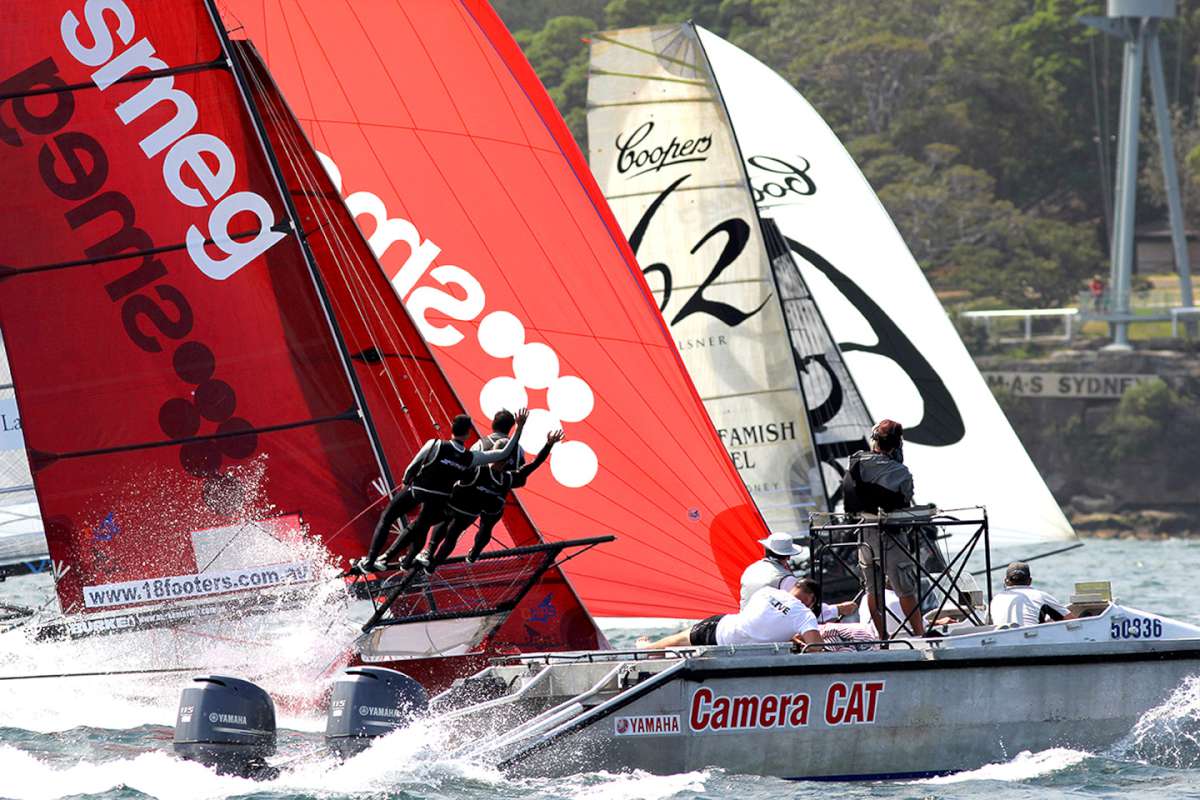Practical: Maintenance
Servicing your own diesel engine is a good way to save money but also an essential skill for any cruiser who plans to cruise off the beaten path. Here Jon Neeves takes us through the process step by step.
Modern diesel engines are amazingly reliable. In the recent decades of built-in obsolescence the marine diesel has bucked the trend and an engine built today by a well-known supplier and with regular servicing should last at least as long as the yacht in which it is installed.
Moreover, with no disrespect to the engine builder, modern diesels are incredibly simple – at least those smaller than 50hp. Above that size we find turbos and increased electronics – which make them a bit more complex. Go to any minor fishing port on a Pacific island and show the local diesel mechanic your engine and he will usually feel quite at home. It might have a couple of electrical relays but that apart the engine will be similar to one built 30 years ago.
The most significant innovation has been the introduction of freshwater cooling, and there is no rocket science here. Freshwater cooling is a bit of a misnomer because the cooling is usually 50 percent water and 50 percent glycol (so do not try to drink it) – anti-freeze in the northern hemisphere – but an anti-corrosive cocktail for those in warmer climes. Modern diesels might be more efficient and built to higher tolerances, but this does not mean they are complex.
Essential skill
The key to longevity is servicing and given that the engines are simple this task is well within the scope of most yacht owners. For anyone venturing even a short distance from their home port the ability to service their engine and diagnose any problems is as essential as being able to use a GPS, knock up a gourmet meal, trim the sails or anchor securely.
Routine servicing requires a minimum of equipment – maybe a few spanners, a couple of screwdrivers and a filter wrench. The major disincentive to servicing is that it can be a bit messy, but a few rags and some engine cleaner can work wonders. To reduce mess/spillage there are a couple of options. A heavy-duty polythene bag collects most spills from the filters and an alternative that works well is a “bucket” made from a liquid clothes-washing detergent bottle or large soft drinks bottle (just cut the top off). These can be more manageable than the floppy polythene bag. Simply drop the filter into the bag/bucket simultaneously collecting the spills. It sounds simple, and sometimes it works. Have another plastic bottle handy to store the old oil.
A few do's
• Check with the engine builder – all the commonly available engines have decent service manuals. By this I mean not the owner's manual, which is usually pretty useless, but a “real” service manual, either in DVD or printed form – and if the former, print it out; a DVD is of little use if you do not have your computer on board. These really should be supplied with the yacht as part of the documentation package, but if you need to buy a copy for your engine it will be worth the minor investment. Some engine manuals, and spare parts, for older and obscure engines are available on the internet.
• Always carry spares of the consumable parts you will need and enough oil to complete the service: oil, impellor, primary and secondary fuel filters, oil filter and air filter. If you are making a long cruise it is worth carrying enough to allow your completion of services without scouring any local stores for parts that fit. When you have calculated the spares you will need, add extra sets – you never know what will happen. For those considering a “life change” cruise you will want to increase your spare-part inventory (but you will know what that entails) but think of mechanical seals, injectors, alternators, drive belts and fuel pumps.
• Before you start your service have all the tools, spare parts, new oil, containers for waste fuel and oil and rags close to hand because wandering around the stateroom with oily hands looking for the item you forgot is unlikely to endear you to your partner.
• Servicing is easier with two people and four hands and also engenders crew integration.
What engines need
To work reliably diesel engines need clean and water-free fuel, good cooling, good lubrication, a clear air intake and clear wet-and-dry exhaust system.
Your engine manual will have a service schedule, every 50 hours, every 250 hours, or whatever. On Josepheline we stick to the schedule fairly religiously, change all the filters (2 x fuel, 1 x oil, 1 x air) simultaneously, change the oil and also check the impellor and replace the impellor where necessary (we find the impellor lasts about 250 hours).
Sometimes we pick up dirty fuel or worry after a grounding as to whether the seawater cooling system is clear, and we can then bring forward our servicing schedule. It is cheaper to make unnecessary services than have an engine overheat or stop as a result of contaminated fuel.
Our air filter is foam, which we wash in turps and then soap and water and reuse, but we carry spares. Given they are relatively simple they are surprisingly expensive, hence the focus on recycling. Some foam filters are “oil” soaked (the oil helps clean the air feed to the engine) but this is not common for marine diesels. Dirty air filters will restrict air flow to the cylinders and in the extreme can result in black smoke and unburnt fuel in the exhaust. Black exhaust can also be caused by a fouled hull, a rope or polythene bag round the prop and poor cooling.
Clean and water-free fuel is commonly achieved by buying good fuel in the first place but CAV filters provide the best back-up. Terrestrial fuel service supplies can be cleaner than marina supplies – greater throughput and less chance of water contamination, and they are cheaper. CAV filters are easily changed and the sight glass should give good warning of impending problems, but only if regularly checked. The CAV filter can be easily relocated if its location is such that it is difficult to see quickly. If your fuel tank has a sump, and quality yachts will have sumps, it is good practice to drain or check the sump regularly. This allows contaminant removal and is the easiest way to check fuel quality. Fuel additives are valuable; they reduce bacterial growth and disperse any minor water contamination. If you are unfortunate enough to be supplied with poor-quality fuel, you will need to check and change the filters regularly (and you will be glad you carried the excess filters!). Having two CAV filters is also useful, particularly if you can isolate one to change its filter while still running the engine using the other one.
Once, on a China Sea crossing, we bought 40L of diesel from a Taiwanese fishing boat. We had to clean the glass sedimentation cell of the CAV filter every hour. You never know – carry spare filters.
Filters
There are commonly two fuel filters on diesel engines – a CAV filter, usually a remote installation, and a secondary spin-on filter that is commonly attached to the engine – and both should be replaced. They cost so little it's not worth being parsimonious. Prior to filter changing, turn off the fuel supply, commonly on the CAV filter assembly, especially if you are lucky to have a gravity-feed fuel supply. CAV filter replacement commonly needs a small spanner and spin-on filters need a filter wrench, which will also fit the spin-on oil filter. Once the filters have been replaced, you will need to “pump” the fuel through the system – open the fuel cut-off valve and use the manual pump (usually operated with one finger and surprisingly inaccessible) on the fuel line attached to the engine. WM Diesel sell a rather neat in-line fuel pump if you find the pump attached to your engine inadequate. You need to “crack” the fuel line, to let the air out, and this needs another spanner. Once the filters have been fuel filled by the manual finger pump and the fuel line re-sealed any other air in the pipework will be cleared when the engine is restarted.
Oil filter change is best done once the old oil has been pumped out and this latter is more easily achieved with warm oil so run the engine first. Remove the old spin-off oil filter, filter wrench, and replace with a new one and then replace the oil. The only difficult part is juggling the filter wrench, poly bag/waste oil container and the filter so as to minimise mess/leakage – this is one area where a second person can be so helpful). Again it is possible to buy a remote oil filter housing kit, which might make oil change easier and cleaner.
Saildrive
The oil in the saildrive is commonly ignored; we met one owner who had never changed or checked the oil in their saildrive in four years! Oil in saildrives can be pumped out, using the same pump as used to remove the engine oil. All the oil can be removed if you slip the boat and open the bung at the base of the drive – obviously best completed when the boat is antifouled. If your saildrive oil is “milky”, this would normally indicate water ingress to the saildrive, usually a failed mechanical seal where the prop shaft exits the drive. This is not a difficult service, but you do need to slip the yacht and could be completed with replacement of the drive seal (and outside the scope of this article).
The impellor can be easily checked and replaced as soon as wear is detected. Impellor “removers” can be used but most people lever the impellor off using two flat-head screwdrivers to “pull” out the impellor.
Timing
The foregoing are the simple and well documented servicing requirements for any/all marine diesels. The only difference between the manufacturers is the timing of the service, and many engines survive without any adherence to the recommended schedule; the engines are sufficiently robust to withstand abuse.
As an engine ages, gets beyond 1,000 hours, new demands are going to be placed on the owner, many of which are still well within the capability of the majority. Again your manual will delineate the increased service requirements, such as changing the fresh-water cooling.
Reiterating the critical requirements for a trouble-free diesel: you need good cooling, clean fuel and good lubrication. With an older engine – problems will develop.
Common failures
A problem likely to develop will be “failure” of the seawater cooling system. Failure can occur because the water intake blocks, often with crustacean, or the pipework becomes blocked with calcium. Crustaceans can live and grow inside the water intake in saildrives and the only solutions are reaming the intake holes during antifouling and then flushing from the inside out – and this will not be a task normally completed by your boatyard unless you specifically demand the service. If the intakes of the saildrive become so blocked, it is common to simply bypass the saildrive and install a conventional hull fitting (you can take the saildrive apart – but this is fairly drastic and not worth the effort if only to re-open the water intake). Saildrive water intakes can also be blocked by weed and plastic bags; our engine once stopped when we motored through a swarm of rather large jelly fish, and this risk will be reduced with a skin-fitted water intake. Forward-facing water intakes on multihulls can be a problem as at speed it is said that water can be forced into the cylinders – remedied in advance by shutting off the seawater intake valve (which can be good practice in any event).
Calcification
Calcification can occur in the seawater rubber pipework. The easiest solution is to take each piece of pipework off, flex it as much as possible – you will hear the calcium carbonate cracking – and then flush with water. Do not use acid; it will swell the rubber. Cleaning the heat exchanger is another simple task, remove both end fittings and take the heat exchanger out in the most convenient direction (some of the freshwater coolant will run out and this will need to be replenished).
Cleaning the heater exchanger is simply a matter of cleaning each tube, tedious, but a plastic-coated metal coat hanger is ideal. It is worth cleaning the heat exchanger if you have passed through an area of weed or you have worked hard, stirring and drawing mud into the seawater system, to move a grounded vessel.
The final area to require attention is the exhaust elbow, the short piece of pipe, commonly cast-iron but sometimes stainless steel, where the hot exhaust meets the seawater coolant. The hot exhaust causes severe precipitation of calcium carbonate in the elbow, which will eventually restrict flow of either or both of the seawater or exhaust gases. When you look at the deposit it looks to be carbon but it is in fact virtually limestone, or dolomite, pigmented with carbon (from the exhaust) and as hard as concrete. Elbows are simple, but cost is inversely proportional to simplicity, on a 20hp Volvo around $400, but the old one can be cleaned with hydrochloric acid – cast-iron and stainless are insoluble in HCl. Leave the unit in a plastic bucket with a 1:3 ratio of “builders” HCl:water overnight, stir with a wooden stick occasionally, and the elbow will be as good as new (take all precautions – the acid will burn and keep clear of pets and children). It might be possible to “drill out” the calcium carbonate – acid seems an easier solution.
Calcification of the elbow sufficient to necessitate cleaning will occur around 1,500 hours, although this possibly depends on the dissolved calcium levels in your local seawater. In some parts of Australian waters dissolved calcium and magnesium (in the same elemental family as calcium) are so sufficiently concentrated that they precipitate naturally (to produce dolomite, which is extremely rare). Calcification is said also to depend on whether you run your engine fast (better) or slow. Calcification is poorly documented; possibly it's a particularly Australian problem.
Other acids will work but HCl is fairly easily available. Industrial vinegar (used in window cleaning) would work if you are desperate, but it is dilute compared to the 30 percent mix suggested. Do not use acid to clean any rubber items, such as pipes, the acid will swell the rubber, making it spongy, and degrade and possibly destroy any rubber based gaskets or valves (thinking laterally – manual toilets). Despite what you might read industrial vinegar will degrade rubber. We have tried it!
Impellor seal
The final item likely to fail in the seawater system is the mechanical seal at the back of the impellor chamber. When you remove the impellor it's the black thing through which the shaft fits. The seals fail slowly, initially almost imperceptible drips, at 1,000-1,500 hours. Wear will be quicker in muddy waters. This seal allows the shaft to rotate but stops the water running out. The seals are simple rubber-gasket types and cost, on a 20hp Volvo, less than $20. Replacement costs are high (labour) because it can take time to complete. The seawater pumps on Volvos are gear-driven and have two seals, one for seawater and one for oil, and it is sensible to replace both at the same time (particularly as you are likely to damage the good seal when you disassemble the shaft). Replacement is simple: close the seacock, remove the impellor, unbolt the pump (from the opposite side to the impellor) and remove the pump assembly (backwards). You should now have the shaft, gear, spacers, bearings and seals in one piece. Unfortunately you require a small gear puller to remove the gear but once you have this removed from the shaft everything else slides off. Re-assembly is the reverse procedure. The large time investment is freeing the pump in the first place because the securing bolts can be virtually inaccessible. We found it necessary to use 20mm long spanners (full-sized spanners shortened), a socket and a spanner. Most engine manufacturers buy their seawater pumps from pump suppliers, for example Johnson and Jabsco, who will happily supply diagrams of their pumps – some engine manufacturers, oddly, exclude these diagrams from their service manuals.
Injectors
Easily remedied problems with the fuel supply, other than contaminated fuel or dirty filters, is probably limited to defective injectors. On extended cruises many would carry spare injectors as part of their spares inventory (though old spares can corrode and be useless). Injector maintenance is outside the capability of most of us, but do not worry, it's outside the scope of most marine mechanics as well (even those appointed by the engine manufacturers), but removal is easy and injector service specialists are not uncommon. New injectors cost of the order of $600. Serviced injectors with new pins might cost $200-300 each.
If you are in the market for a new yacht, new to you – not necessarily unused and you are going to complete your own maintenance – then these random thoughts might merit consideration. If second hand, assume the engine has not be completely or competently serviced, unless you have sufficient documentation to prove otherwise. How easy is it to access the key service points: filters, impellor, heat exchanger and water pump? Kobota- (Nanni, WM Diesel et al) based engines have most service points at the front of the engine and Lambordinis have most of their service points at the back (though engines with saildrives can be installed back to front). Is the engine of your preferred yacht installed in such a way that servicing will be easy, and for easy, think clean? Alternatively could you install a remote oil filter housing and move the CAV filter to more logical positions. Always remember marine diesels are nearly all conversions of a terrestrial power plant and definitely not built with the narrow confines of a yacht in mind and boat-builders never seem to install engines with service requirements at the forefront of their mind. Why else do we have some service access in the owner's stateroom?
Engine manufacturers recommend full servicing at around 5,000 hours and if your engine is of this sort of vintage, then it is probably more than 20 years old, and it would almost definitely need the engine removed to complete the work properly. It is at this point you might like to think of buying a new engine, not because the old one needs replacement but because the cost of removal plus the service might be more than a new engine. The old engine should have some resale value and a serviced 20-year-old engine is still, well, 20 years old.






















